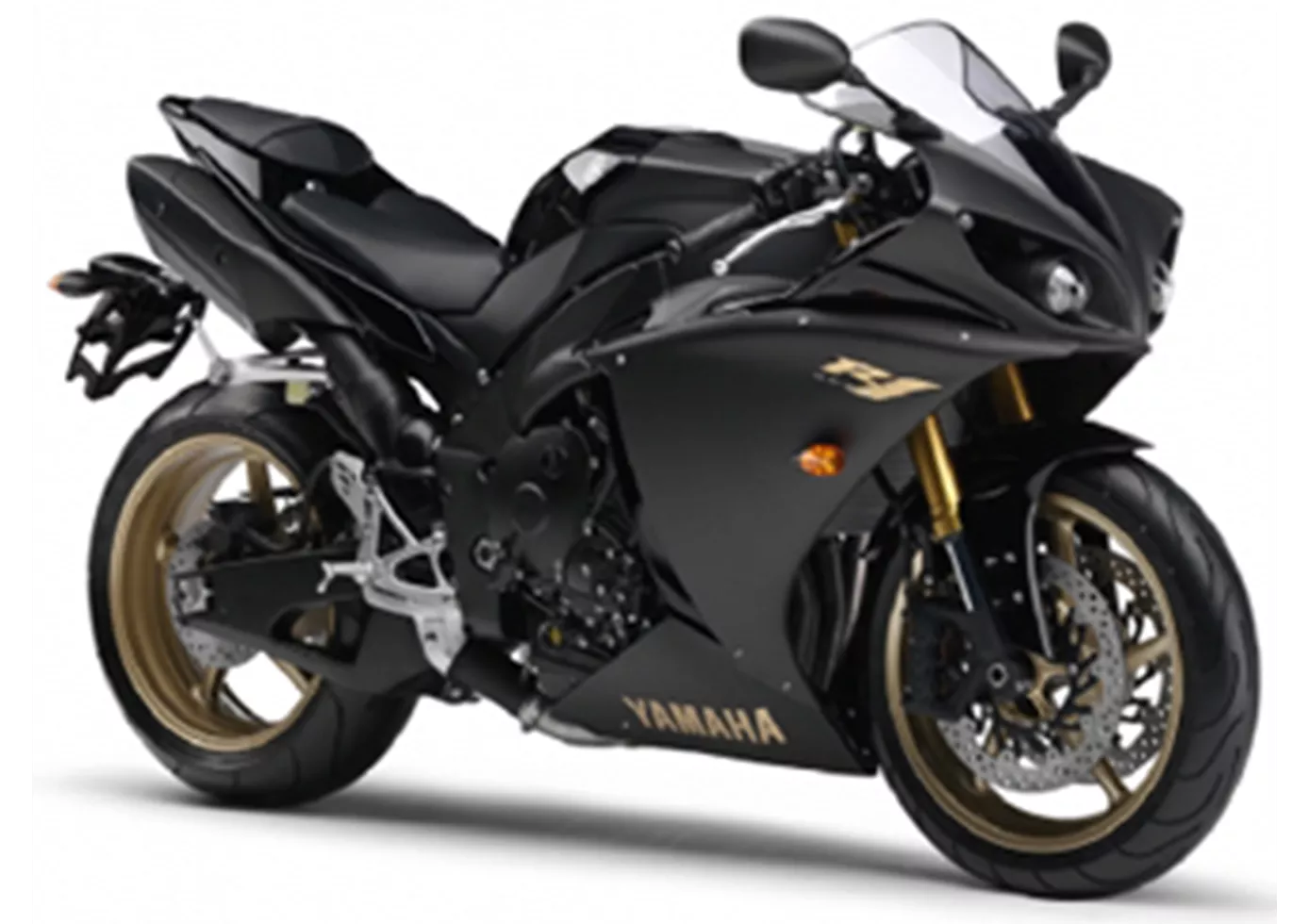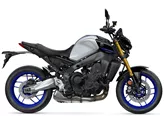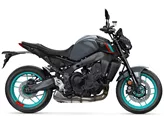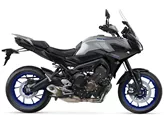Yamaha MT-09 2013 vs. Yamaha R1 2010

Yamaha MT-09 2013

Yamaha R1 2010
Vue d’ensemble - Yamaha MT-09 2013 vs Yamaha R1 2010
The Yamaha MT-09 2013 and Yamaha R1 2010 are both impressive motorcycles, but they have distinct differences that set them apart.
Starting with the Yamaha MT-09 2013, it boasts a reasonable price tag and a powerful engine. With a bore of 78 mm and a stroke of 59.1 mm, the engine delivers 115 horsepower and 87.5 Nm of torque. The bike features a 3-cylinder engine with 4 valves per cylinder and a DOHC valve system. The displacement of the engine is 847 ccm, providing ample power for a naked bike.
In terms of suspension, the Yamaha MT-09 2013 is equipped with a telescopic fork front suspension and an aluminum frame with a twin tube design. The front brakes consist of double disks, ensuring efficient stopping power. The front tire has a width of 120 mm and a diameter of 17 inches, while the rear tire measures 180 mm in width and 17 inches in diameter. The wheelbase is 1440 mm, and the seat height is 815 mm. The bike weighs 188 kg and has a fuel tank capacity of 14 liters.

Yamaha MT-09 2013
However, the Yamaha MT-09 2013 does have some weaknesses. The chassis is known to be hard, which can result in a less comfortable ride. Additionally, the bike has a higher fuel consumption compared to other models.
On the other hand, the Yamaha R1 2010 is a supersport motorcycle with its own set of strengths. It features a strong engine with a bore of 78 mm and a stroke of 52.2 mm. This engine delivers an impressive 181 horsepower and 115.5 Nm of torque. Similar to the MT-09, the R1 has a 4-cylinder engine with 4 valves per cylinder and a DOHC valve system. The displacement of the engine is 998 ccm, making it a high-performance machine.

Yamaha R1 2010
The suspension of the Yamaha R1 2010 consists of an upside-down telescopic fork front suspension and an aluminum frame with a Deltabox design. The front brakes are also double disks, providing optimal braking performance. The front tire has a width of 120 mm and a diameter of 17 inches, while the rear tire measures 190 mm in width and 17 inches in diameter. The wheelbase is slightly shorter than the MT-09 at 1415 mm, and the seat height is 835 mm. The R1 weighs 206 kg and has a larger fuel tank capacity of 18 liters.
Despite its strengths, the Yamaha R1 2010 does have a few weaknesses. The suspension elements are considered suboptimal, which can affect the overall ride quality. The bike also has lower peak power compared to some competitors and slightly weak traction. Additionally, the R1 is heavier than the MT-09, which can impact maneuverability.
In conclusion, the Yamaha MT-09 2013 and Yamaha R1 2010 are both impressive motorcycles with their own unique strengths and weaknesses. The MT-09 offers a reasonable price and a powerful engine, while the R1 boasts a strong engine, sophisticated engine character, optimal braking system, and a comfortable seating position. However, the MT-09 has a hard chassis and higher fuel consumption, while the R1 has suboptimal suspension elements, lower peak power, slightly weak traction, and a higher weight. Ultimately, the choice between the two models depends on the rider's preferences and priorities.
Caractéristiques techniques Yamaha MT-09 2013 par rapport à Yamaha R1 2010
Avantages et inconvénients en comparaison
Avantages et inconvénients en comparaison
Yamaha MT-09 2013

Le démarrage est effrayant - renoncement à la 1ère vitesse.
Yamaha R1 2010

Le moteur actuel de la R1 se distingue par sa sonorité caractéristique, sa réactivité et sa puissance linéaire. En ce qui concerne la puissance de pointe, Yamaha a toutefois dû faire quelques concessions.
Comparaison des prix Prix moyen du marché Yamaha MT-09 vs Yamaha R1
There are a few key differences between a Yamaha MT-09 2013 and a Yamaha R1 2010. It takes less time to sell a Yamaha MT-09 with 52 days compared to 53 days for a Yamaha R1. Since model year 2013 1000PS.de editors have written 57 reviews for the Yamaha MT-09 and 80 reviews for the Yamaha R1 since model year 2005. The first review for the Yamaha MT-09 was published on 6/10/2013 and now has more than 39,900 views. This compares to more than 3,900 views for the first review on Yamaha R1 published on 4/28/2003.




















